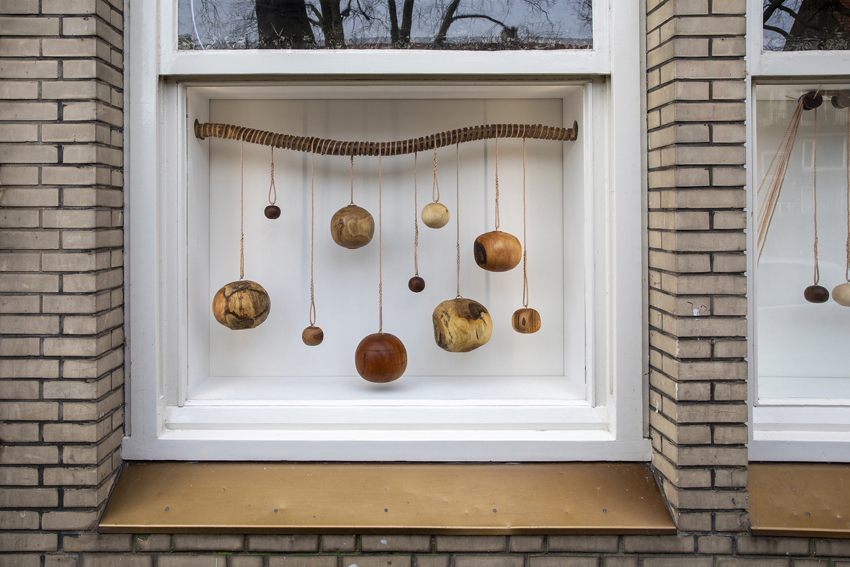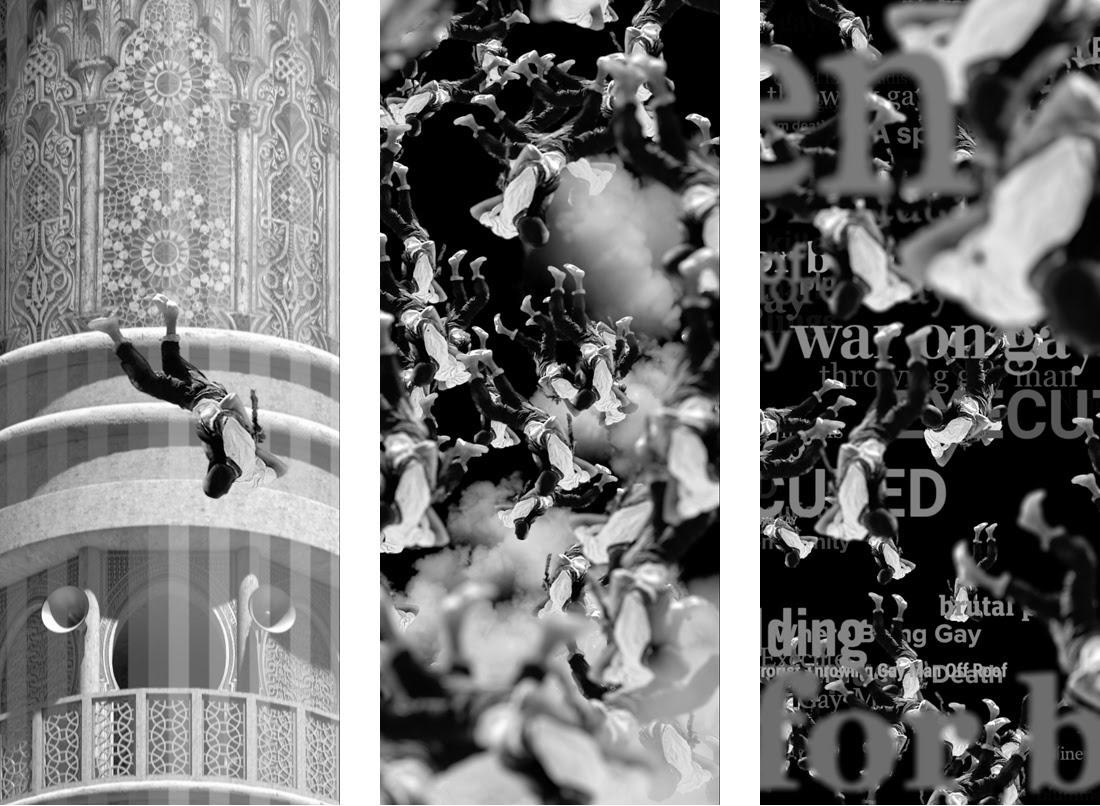
Maurice Meewisse, Celestial Machines, 2024, Sculpture, Wood, rope, mixed media, 119 × 158 × 32 cm
The presentation explores Maurice Meewisse's innovative utilization of his Rotterdam studio complex's nine windows as exhibition spaces for his latest installation, 'Celestial Machines' (Foundation B.a.d, Rotterdam 2024). Originally conceived as a site-specific project within this unique environment, the artwork underwent a transformation for its presentation at different contexts. Meewisse reinvented the project to align with the specificities within a room, crafting a new iteration that embodies the essence of site-specificity while embracing the distinct context of the exhibition.
Meewisse draws from Federico Campagna's ideas as seen in "Technic and Magic." Campagna connects the themes of technology, magic, and spirituality with the planetary system by drawing parallels between ancient beliefs, modern technological systems, and our understanding of cosmic forces. By doing so, he invites readers to reconsider their place in the universe, their relationship with technology, and the potential sacredness of the natural world, including the planetary system. Likewise Meewisse offers a critique of modernity while proposing a reclamation of magical thinking as a way to enrich our lives and reconnect with the mysteries of existence.

Tudor Bratu, Archive, 2018, Inkjet Print, Framed, Double-sided, 27,5 x 40 cm
Tudor Bratu delves into the theme of "otherness" through the lens of his family's heritage. In his work, he meticulously dissects the intricacies of urbanization patterns and models, illuminating their profound impact on shaping and perceiving the "other." Within urban landscapes, the passage of time is not merely marked by its fleeting moments but also by the tangible evolution of architectural constructs and urban planning, reflecting shifting attitudes, ideologies, and beliefs.
Bratu's narrative is deeply rooted in his family's migration history. Beginning in 1945, his grandmother found herself displaced following the Soviet incursion into parts of Romania. Subsequently, his father, driven by opposition to the dictatorial reign of former president Nicolae Ceaușescu, sought refuge elsewhere. Bratu himself, in 1987, embarked on a journey as a migrant boy, seeking new opportunities in the Netherlands.
Interwoven with this familial narrative are reflections on urban architecture and poignant encounters amassed during Bratu's travels across Central Europe. Particularly poignant are his experiences during the tumultuous summer of 2015, amidst the peak of the refugee crisis, lending depth and immediacy to his contemplations.

Harm Weistra & Eddi Bal, Echo of Falling Man, 2017, HD video animation, 2'49'' Loop, No sound
Harm Weistra & Eddi Bal's joint personal background and experiences are reflected in their interest in the life of minorities, in the movement of the human body, and in a preference for video, film, and animation as an art form. With the work Echo of Falling Man (2017), Harm Weistra & Eddi Bal 'reanimate' a still picture of one of the unidentified gay men, killed by ISIS by throwing them off buildings. The work can be seen as an afterimage, mirroring the iconic Richard Drew photo of a 'falling man' who jumped out of the World Trade Center during the 9/11 attacks in New York; a reference to the relationship between the Al‐Qaeda attacks in New York and the terror of ISIS in the Middle East.
Echo of Falling Man is part of the exhibition Les Fleurs du mal, curated by Pieter Vermeulen.
Drawing inspiration from Charles Baudelaire's renowned poetry collection, Les Fleurs du Mal brings together a select number of contemporary artworks. The book was considered an insult to public decency upon its release in 1857. The French Ministry of Justice banned the publication for its subversion of bourgeois norms and values by exploring themes of eroticism, sin, violence, decadence, death and decay.
Set in the grandeur of a former neoclassical courthouse, this exhibition seeks to articulate a delicate balance between ethics and aesthetics from a distinctly artistic perspective. Against a backdrop of increasing polarity, adversity, and turmoil, viewers are prompted to reflect on the nature of evil, the notions of disavowal and dissociation, the power of ambiguity, and the enduring relevance of art and beauty.
With works by Angélique Aubrit et Ludovic Beillard (Wouters Gallery), Fia Cielen (DMW Gallery), Bert De Geyter (Settantotto), Dodi Espinosa (Galerie Fleur & Wouter), Yorgos Maraziotis (Base-Alpha Gallery), Joost Pauwaert (Barbé Gallery), Eliza Pepermans (Schönfeld Gallery), Ulrike Rehm (Go Mulan), Sam Samiee (No Man's Art Gallery), Pascal Vilcollet (Ballroom Gallery), Colin Waeghe (Galerie Zwart Huis) and Harm Weistra & Eddi Bal (Gallery Joey Ramone), Luzia Simons (Galerie La Patinoire Royale Bach).